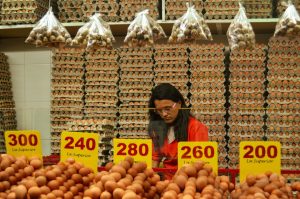Forex trading is an exciting and dynamic market that allows traders to make profits by buying and selling different currencies. However, before you can start trading, it’s important to understand the costs involved. Calculating the costs of forex trading can be a complicated process, but it’s essential to understand how these costs impact your trading strategy and overall profitability. In this article, we’ll take an in-depth look at how to calculate forex trading costs.
Spread
The spread is the difference between the bid and ask price of a currency pair. The bid price is the price at which a trader can sell a currency pair, while the ask price is the price at which a trader can buy a currency pair. The spread is essentially the cost of trading, and it’s measured in pips. Forex brokers make money by widening the spread, so it’s important to look for brokers with low spreads.
To calculate the spread cost, you need to know the size of the position you’re trading, the spread in pips, and the value of each pip. For example, let’s say you want to trade EUR/USD, and the spread is 1 pip. If you’re trading 100,000 units of EUR/USD, the spread cost will be $10 (1 pip x $10 per pip x 1 lot).
Commission
Some forex brokers charge a commission on top of the spread. The commission is usually a fixed amount per lot, and it varies from broker to broker. The commission cost depends on the size of the position you’re trading and the commission rate charged by your broker.
To calculate the commission cost, you need to know the size of the position you’re trading, the commission rate, and the value of each pip. For example, let’s say your broker charges a commission of $5 per lot, and you’re trading 100,000 units of EUR/USD. If the value of each pip is $10, the commission cost will be $5 (100,000 units / 100,000 x $5 per lot).
Swap
Swap is the interest rate differential between the two currencies in a currency pair. When you hold a position overnight, you’ll either receive or pay swap depending on the interest rate differential. If the interest rate of the currency you’re buying is higher than the interest rate of the currency you’re selling, you’ll receive swap. If the interest rate of the currency you’re selling is higher than the interest rate of the currency you’re buying, you’ll pay swap.
To calculate the swap cost, you need to know the size of the position you’re trading, the swap rate, and the number of days you’re holding the position. For example, let’s say you’re trading EUR/USD, and the swap rate for buying EUR is 0.50% while the swap rate for selling USD is 0.25%. If you’re trading 100,000 units of EUR/USD and holding the position overnight, the swap cost will be $12.50 ((0.50% – 0.25%) / 365 days x 100,000 units x 1 day).
Slippage
Slippage is the difference between the expected price of a trade and the actual price at which the trade is executed. Slippage can occur when there’s a sudden change in market conditions or when there’s low liquidity. Slippage can increase your trading costs, and it’s important to factor it into your trading strategy.
To calculate the slippage cost, you need to know the difference between the expected price and the actual price and the size of the position you’re trading. For example, let’s say you want to buy EUR/USD at 1.2000, but the actual price you get filled at is 1.2010. If you’re trading 100,000 units of EUR/USD, the slippage cost will be $100 (10 pips x $10 per pip x 1 lot).
In conclusion, calculating forex trading costs can be a complex process, but it’s essential to understand the costs involved to make informed trading decisions. The main costs of forex trading include the spread, commission, swap, and slippage. By understanding these costs and factoring them into your trading strategy, you can minimize your trading costs and increase your profitability.





